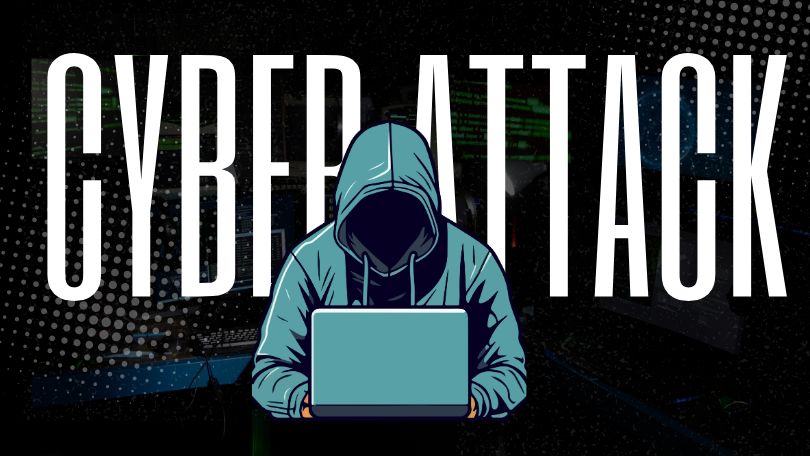Despite fast modification in cybersecurity technology, phishing attacks still bring hurdles for companies across the globe. These fake emails, messages are created to trap people into displaying sensitive data — like login and financial details, or personal information. While many companies work strongly in firewalls, AI-powered threat detection, and encryption, there is still one weak element and that is human. If we see employees— Whether junior members or seniors are often the easiest way in the cybersecurity chain.
What Is Phishing and Why It’s So Effective
Phishing is similar to social engineering. Attackers pretend to be authentic sources, such as bank employees, government or even company officials, to send fake messages to create fear, rush, or curiosity inside you. For instance, they can send you an email saying “Your account has been hacked. Click here to reset your login password right now’’ is a method trap that targets people who make decisions spontaneously without giving a second thought.
What sets fishing apart is its effectiveness that doesn't depend on hacking systems like laptops, mobile phones or computers. It plays with people’s minds and manipulates them. If any employee successfully falls for a phishing scam then cases like data breach, bankruptcy, or bad image for the organisation can occur.
The Stats Speak Volumes
Reports (2024 Data Breach Investigations Report) conducted by Verizon states that over 36% of data breaches indulged phishing scams, with email being the most common factor. Moreover, 85% of breaches had human involvement, including errors, privilege misuse, and social engineering.
Even with mandatory cybersecurity training, a surprising number of employees still click on malicious links or download suspicious attachments. Why? Because cybercriminals are getting smarter, more convincing, and more personalised in their approaches.
Common Employee Mistakes That Lead to Phishing Success
- Clicking Without Thinking: Many employees open emails and click links without verifying the sender or inspecting the content.
- Using Personal Devices: Remote work has blurred the line between personal and professional devices. Unsecured smartphones or laptops can become easy entry points.
- Reusing Passwords: When one password is used across multiple platforms, a phishing attack on one system can compromise others.
- Lack of Training: Not all employees are tech-savvy. A lack of ongoing, relevant training makes it easy for phishing emails to slip through unnoticed.
Why Technology Alone Isn’t Enough
You can have the best firewalls, antivirus software, and endpoint detection tools, but they are all useless if an employee willingly gives away access. Cybersecurity is as much about culture and behaviour as it is about technology. Even the best systems can’t prevent a user from voluntarily sharing sensitive information.
Building a Human Firewall: What Organisations Can Do
- Frequent Training, Not Just Annual Modules
Cybersecurity awareness should be a continuous process. Monthly simulations, real-world case studies, and interactive sessions help reinforce learning.
- Simulated Phishing Attacks
Many companies now conduct regular mock phishing attacks to test employee awareness. Those who fall for them are then enrolled in refresher courses.
- Multi-Factor Authentication (MFA)
MFA adds an extra layer of security. Even if credentials are compromised, access cannot be granted without a second form of verification.
- Clear Reporting Procedures
Employees should be encouraged to report suspicious emails without fear of being penalised. Having a clear, simple way to flag potential threats helps detect patterns early.
- Cyber Hygiene Policies
Restricting the use of personal devices, enforcing regular password changes, and limiting access privileges are basic steps that strengthen your overall defence.
Encouraging a Security-First Culture
Beyond tools and training, businesses must foster a culture where cybersecurity is everyone’s responsibility. When employees understand the why behind the policies, they're more likely to follow them. Communicate that a single careless click can cost the company millions—not to mention harm its clients and customers.
Recognising and rewarding safe online behaviour can also go a long way in reinforcing good practices. Turning cybersecurity into a shared mission rather than a checklist item makes employees feel like active participants in defending their digital workspace.
It's a Wake-Up-Call!
In the ongoing battle against phishing attacks, technology is only one part of the solution. The real battlefield is human behaviour. Until employees become as vigilant and well-trained as the tools designed to protect them, phishing will continue to succeed.
The best firewall you can build is not on your server—it’s in your team’s mindset.
Mr. Alok K Singh
Co-founder, SNVA Group

